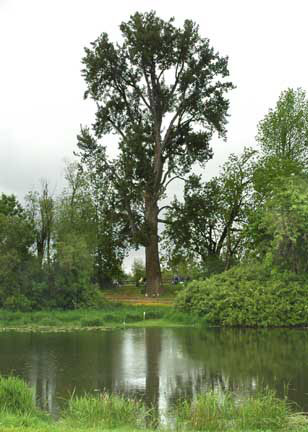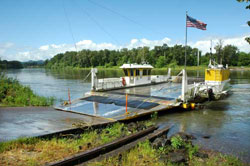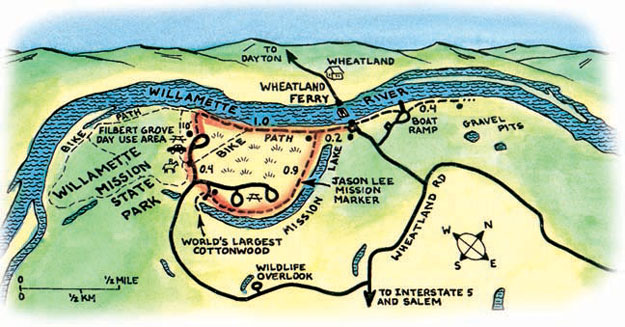
Follow a riverfront promenade to the historic Wheatland Ferry
About the Hike: This riverside loop through Willamette Mission State Park not only visits the nation's largest black cottonwood tree and the site of a historic 1834 settlement, but it also includes a free ferry ride across the Willamette River and back.
Difficulty: An easy, level 2.7-mile loop.
Season: Open all year.
Getting There: Drive Interstate 5 north of Salem 9 miles to Brooks exit 263. Then head west on Brooklake Road for 1.7 miles, turn right onto Wheatland Road for 2.4 miles, and turn left at the Willamette Mission State Park sign. Follow the entrance road 1.8 miles, keeping left at all junctions, and park at the Filbert Grove Day Use Area.
Fees: Expect a $3-per car fee at the park. The ferry also charges for cars, but pedestrians ride free.
Hiking Tips: The trail starts beside the restrooms at the far end of the Filbert Grove parking loop. Walk 0.2 mile to the riverbank and turn right on a paved bike path between the bank's cottonwood trees and a grassy field. Follow this promenade a mile to the Wheatland Ferry landing.
 The steel ferry platform here uses an overhead cable and electric engines. Pedestrians ride free. The ferry runs from 6am to 9:45pm every day except Christmas and Thanksgiving-and about 30 or 40 days in winter when it closes for high water or repairs (call 503-588-7979 for schedule information).
The steel ferry platform here uses an overhead cable and electric engines. Pedestrians ride free. The ferry runs from 6am to 9:45pm every day except Christmas and Thanksgiving-and about 30 or 40 days in winter when it closes for high water or repairs (call 503-588-7979 for schedule information).
The gravelly shore beside the landing is perfect for skipping rocks and watching the river. Children delight in finding tadpoles, frogs, and crawdads here. Look in the wet sand for the palm-sized tracks of great blue herons and the little hand-shaped tracks of raccoons.
To return to the loop, hike 300 yards back from the landing on the bike path and turn left onto a broad trail. This path leads through the woods to the shore of marshy Mission Lake. After passing the monument for the old Methodist Mission, the trail enters a developed picnic area in an old walnut orchard. Keep left at all junctions for half a mile to the trail's end at a road. A sign here points out the nation's largest black cottonwood-155 feet tall and over 26 feet in circumference. Walk along the road to return to your car, turning left at the first stop sign and right at the next.
History: The Wheatland Ferry has the oldest ferry landing in Oregon, dating to 1844 when mules winched a log barge across the river with ropes.
Before a flood changed the course of the Willamette River in 1861, Mission Lake was the main channel. A trailside monument describes the mission built on the old riverbank by Methodist minister Jason Lee in 1834. In 1840, weary of the river's floods, Lee moved operations to Chemeketa (now Salem), where he founded the Oregon Institute, which became Willamette University.
Later farmers planted hazelnut trees here. In the Filbert Grove Day Use Area some of the old hazelnut trees still produce a bumper crop of nuts that you can gather for free in autumn.
Geology: For the Willamette River, 1861 brought the largest flood in recorded history. High water washed away the cities of Champoeg (downstream, near Newberg), Orleans (opposite Corvallis), and the lower half of Wheatland (at the west dock of the Wheatland Ferry). The flood changed the river's course here, leaving a former riverbend stranded as Mission Lake, a long slough. The old Methodist Mission was left on a backwater, perhaps encouraging the missionaries to move operations to Salem.
By William Sullivan
